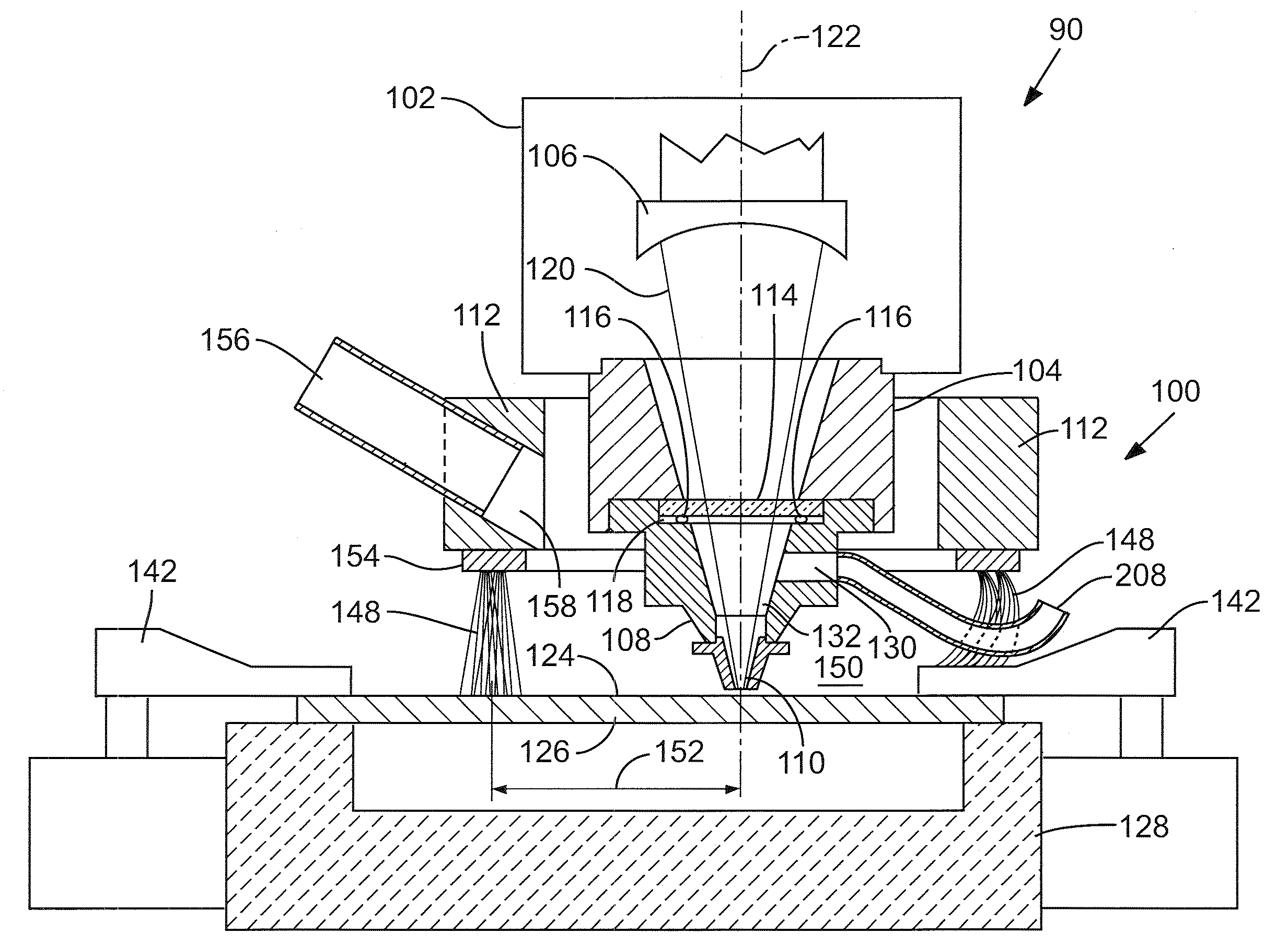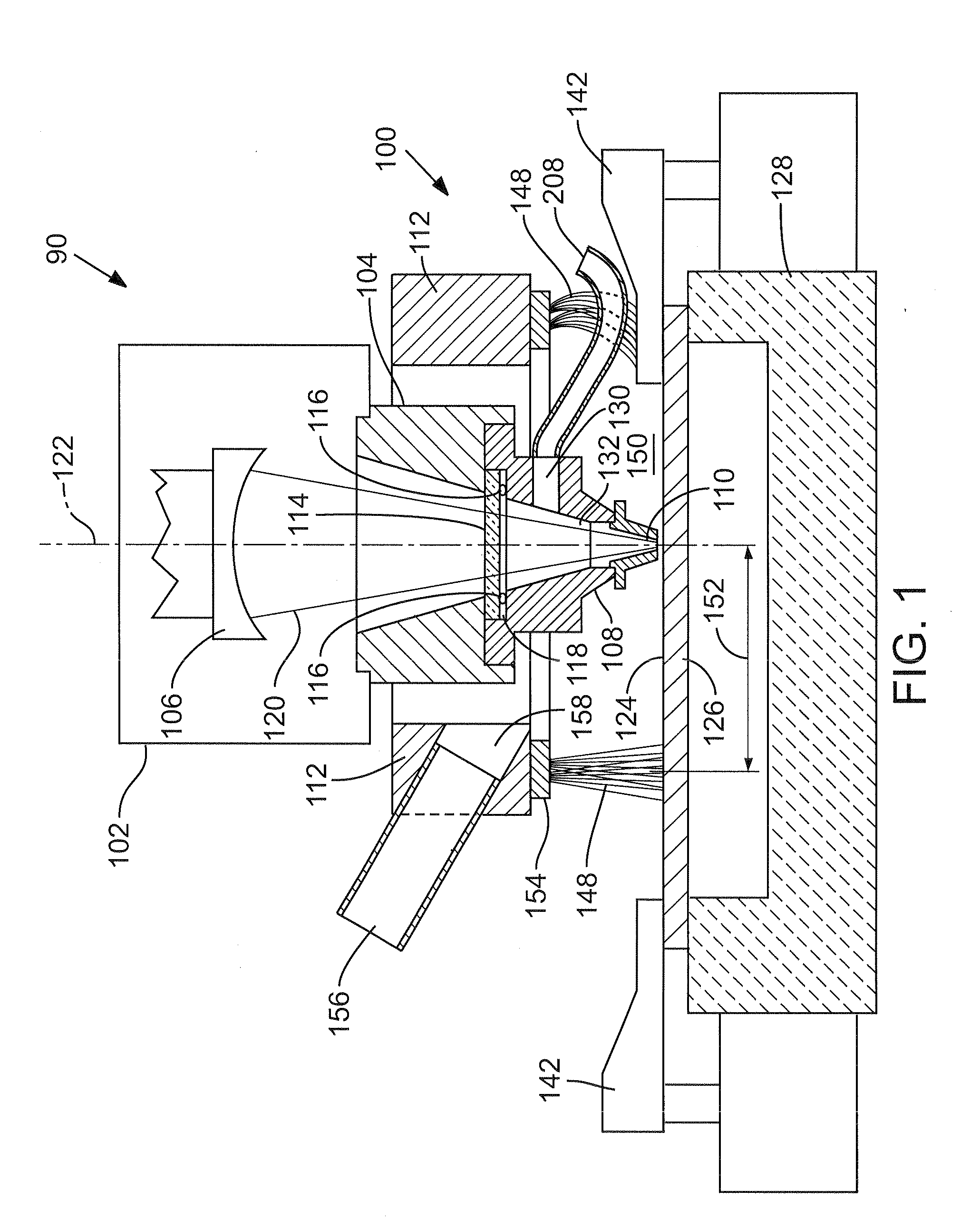Debris capture and removal for laser micromachining
- Summary
- Abstract
- Description
- Claims
- Application Information
AI Technical Summary
Benefits of technology
Problems solved by technology
Method used
Image
Examples
Embodiment Construction
[0014]FIGS. 1-3 show a laser cutting head 90 of a laser micromachining system. Laser cutting head 90 includes laser micromachining-generated debris management (i.e., containment and removal) components 100 associated with a laser focusing lens assembly 102 and a laser cutting head alignment assembly 104 that are adjoined as a unitary structure. Lens assembly 102 includes light beam focusing optical components 106 (shown in FIGS. 1 and 3 collectively as a single lens component), and cutting head alignment assembly 104 includes at its bottom end a nozzle and purge gas mount 108 to which a laser beam and gas flow output nozzle 110 is affixed. A debris removal collar 112 supports cutting head alignment assembly 104 and nozzle and purge gas mount 108. Optical components 106 of lens assembly 102 are positioned safely behind a protective debris window 114 set and sealed by an O-ring 116 in a recess 118 in the top end of nozzle and purge gas mount 108, where it is adjoined with cutting head...
PUM
| Property | Measurement | Unit |
|---|---|---|
| Pressure | aaaaa | aaaaa |
| Flow rate | aaaaa | aaaaa |
| Electrical resistance | aaaaa | aaaaa |
Abstract
Description
Claims
Application Information
 Login to View More
Login to View More - R&D
- Intellectual Property
- Life Sciences
- Materials
- Tech Scout
- Unparalleled Data Quality
- Higher Quality Content
- 60% Fewer Hallucinations
Browse by: Latest US Patents, China's latest patents, Technical Efficacy Thesaurus, Application Domain, Technology Topic, Popular Technical Reports.
© 2025 PatSnap. All rights reserved.Legal|Privacy policy|Modern Slavery Act Transparency Statement|Sitemap|About US| Contact US: help@patsnap.com



